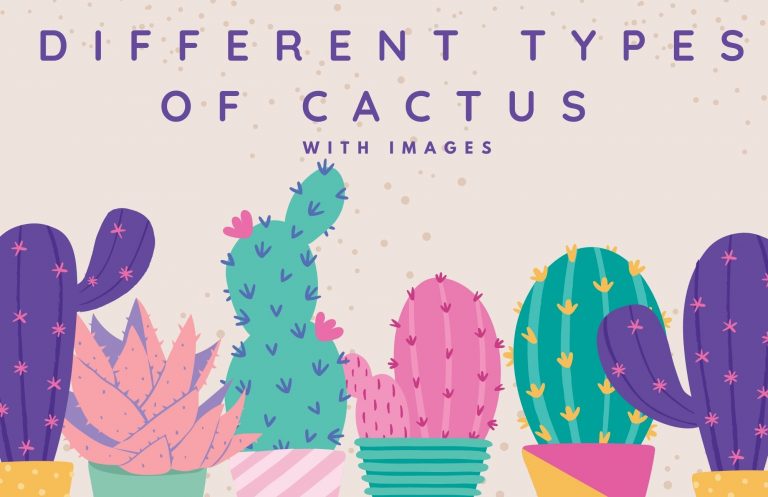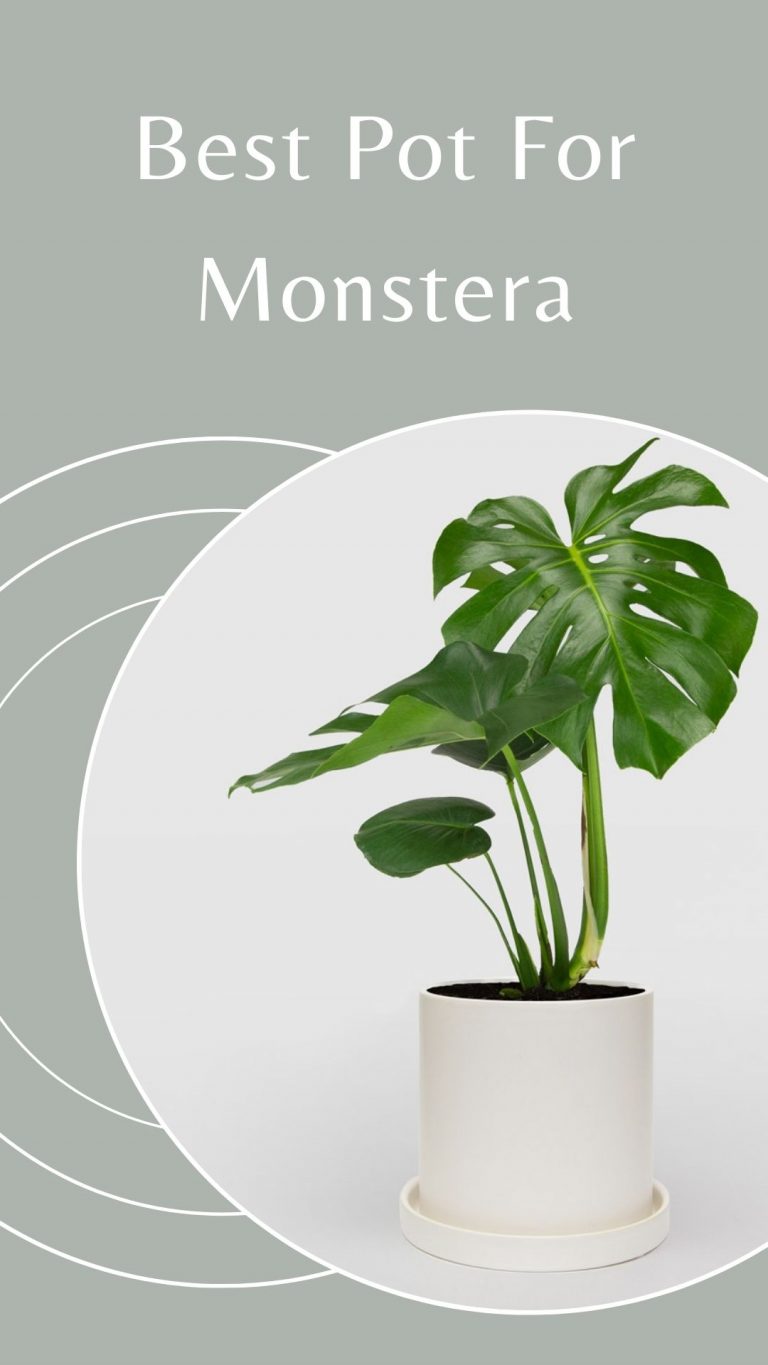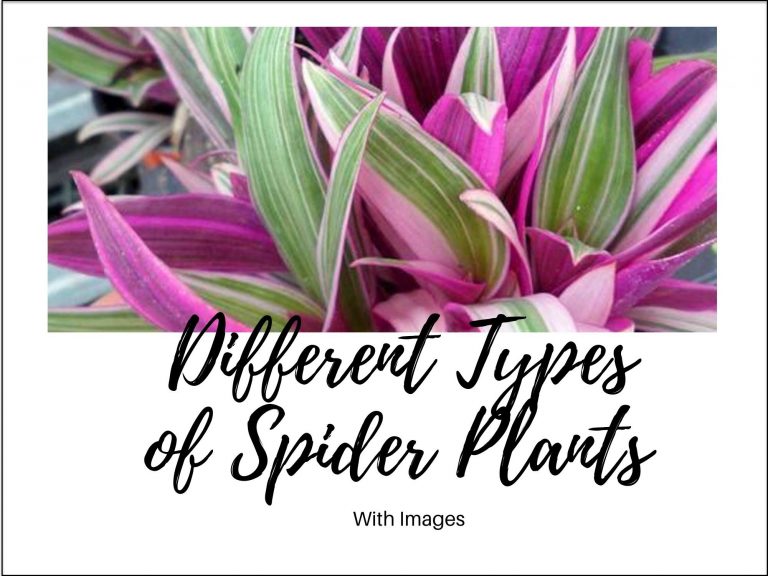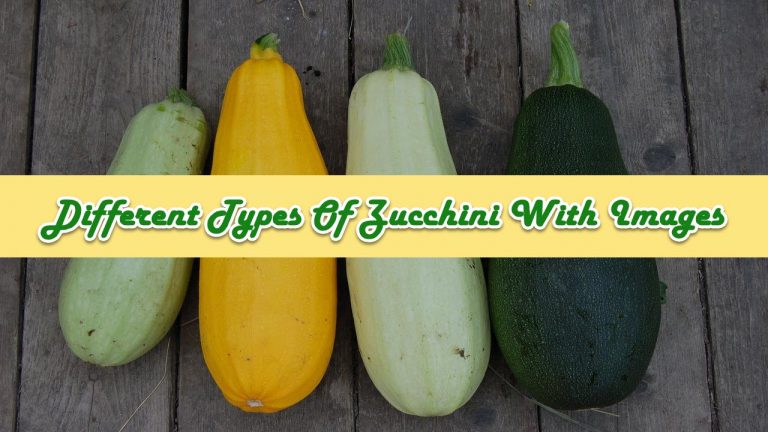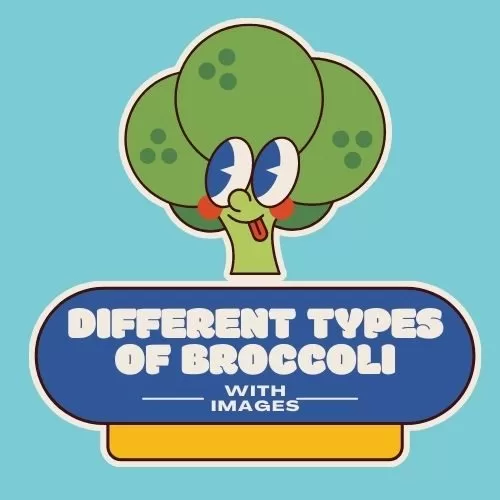10 Different Types Of Indoor Bonsai Trees With Images
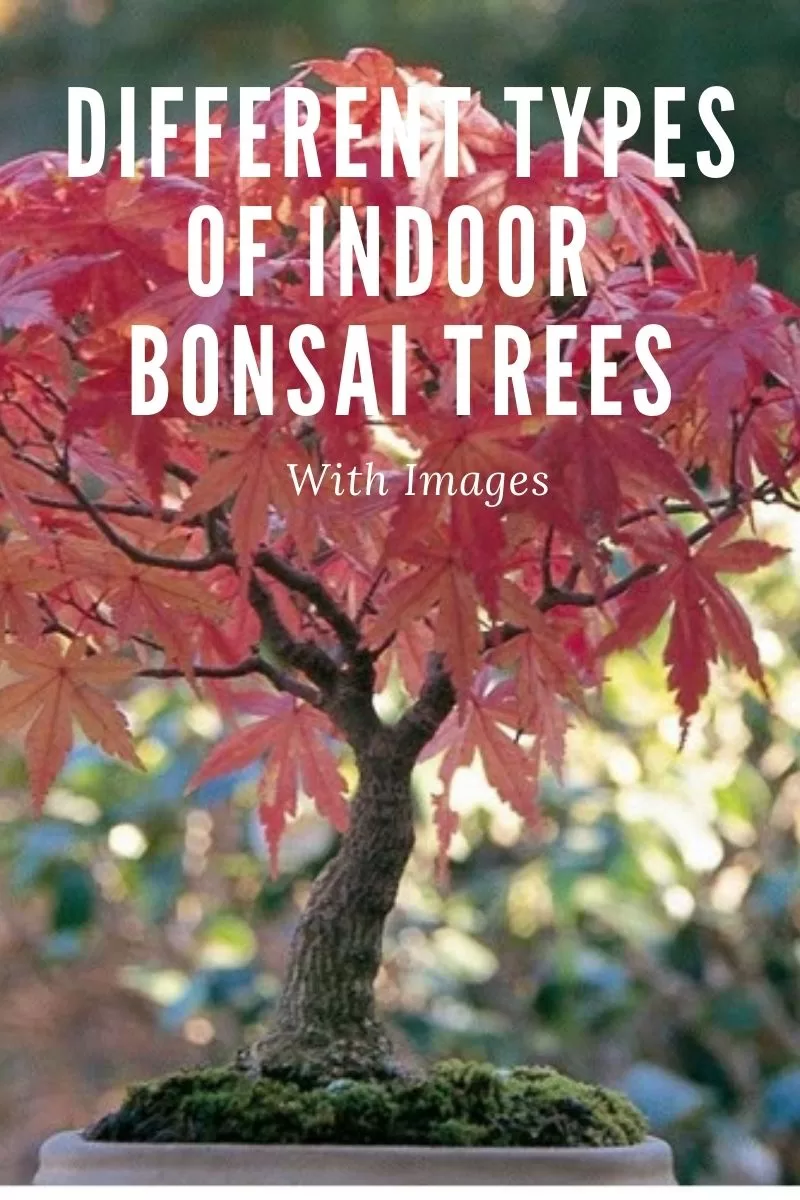
Bonsai is the art of creating from a wood stemmed tree or a shrub. It is basically taking care of these trees that are made in miniature form. The word Bonsai comes from Japanese words, Bonsai which means Potted tree. One of the major characteristic of Bonsai is that the trees still look exactly the same with the full size tree but in a smaller size. Bonsai can be seen displayed inside the office, on the living room or at any areas inside the house. Because of that, Bonsai is now considered to be an indoor plant. In this guide, we will talk more about Bonsai Plant and the different types of Indoor Bonsai trees.

Types Of Indoor Bonsai Trees
To control the growth of most of the bonsai trees, gardeners tend to trim the branch and the roots. Others uses wires to train the trunks to achieve different shapes. Trunks either twists, bends or braids creating a beautiful display piece.
Listed below are the Best indoor Bonsai Trees that are ideal to be places inside the house or in the office that will help bonsai beginners and bonsai enthusiasts as well.
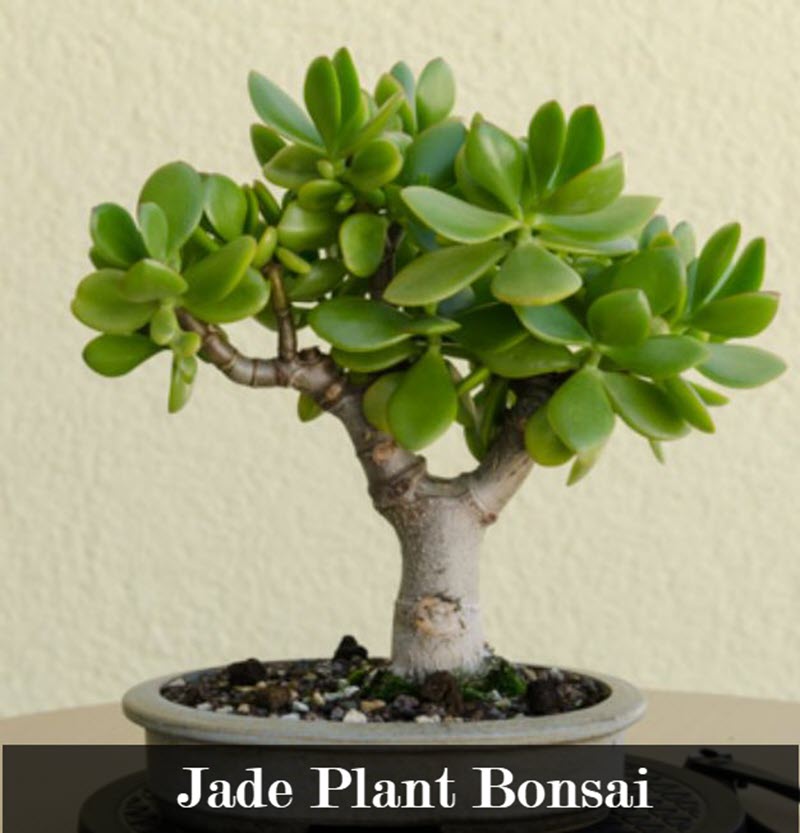
Jade Plant Bonsai (Crassula Ovata)
The Jade Plant Bonsai is also known as Baby Jade Bonsai. If you are newbie to bonsai, baby Jade is the perfect bonsai for you. It is easy to take care of and is one of the low maintenance Bonsai.
The leaves of Jade Plant Bonsai is similar to the quality that of succulents. Given that thought, make sure not to overwater the Bonsai as they can easily absorb but retain its moisture for quite a period of time. Making sure to let the soil dry out before watering it again.
With Baby Jade Bonsai, it belongs to the semi-green category. When the older leaves of Jade Plant withers and falls off, it will then be replaced with a new foliage. This type of Bonsai requires bright light.
Not only is Jade Plant a good indoor plant, it is also a perfect gift as it symbolizes Prosperity, Good luck and Friendship.

Hawaiian Umbrella Bonsai (Arboricola schefflera)
Hawaiian Umbrella is considered to be one of the most easiest Bonsai to make and to take care of.
A versatile Bonsai tree that can tolerate different light conditions and can easily thrive even in various types of soil.
Another low maintenance Bonsai tree where in the need to water Hawaiian Umbrella Bonsai frequently is not even necessary.
Aside from the versality of Hawaiian Umbrella Bonsai trees, these type of indoor bonsai tree grows as a single plant in a plant but will definitely grow more beautifully when in groups. Most of the time, Hawaiian Umbrella’s slender trunks tends to braid themselves together.
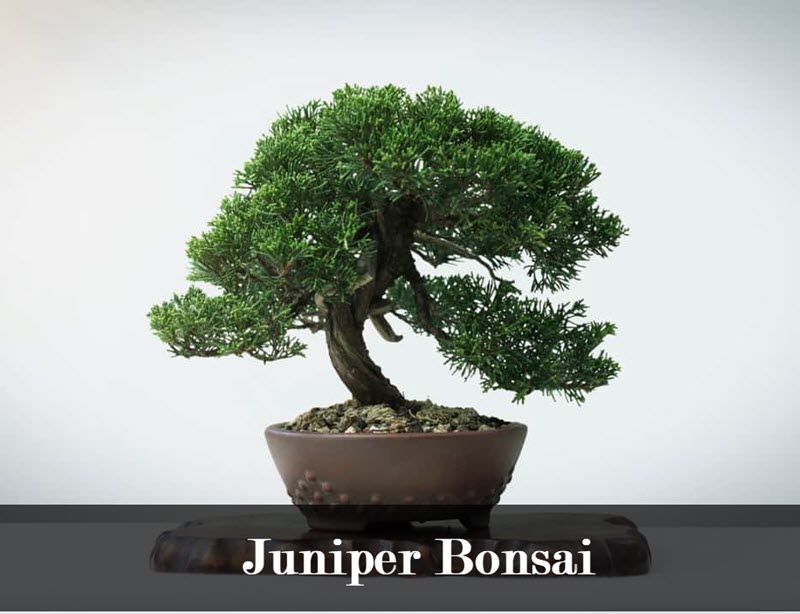
Juniper Bonsai (Juniperus)
Juniper Bonsai is considered to be one of the most popular bonsai in the market. It is the mini version of the Juniper tree, a tree that grows to a height of about 3 feet to about 20 feet or even more.
Many gardeners prefer to make Jupiter into a Bonsai plant because of a few and small foliage and nature.
In taking take of Juniper Bonsai, it is well provided with sunlight.

Norfolk Island Pine (Araucaria Heterophylla)
Norfolk Island pine is a native plant of Norfolk Island which is located between Australia and New Zealand. Nowadays, the Norfolk Island pine is another popular indoor plant across the globe.
Training Norfolk Island Pine into a bonsai is not pretty easy. It thrives to any area that usually gets about 2 to 3 hours of sunlight is just enough for the Norfolk Island Pine. Preferably on the window that is facing the south facing windowsill.
Caring for Norfolk Island Pine Bonsai involves only watering the plant in small amounts when the surface of the soil gets dry.
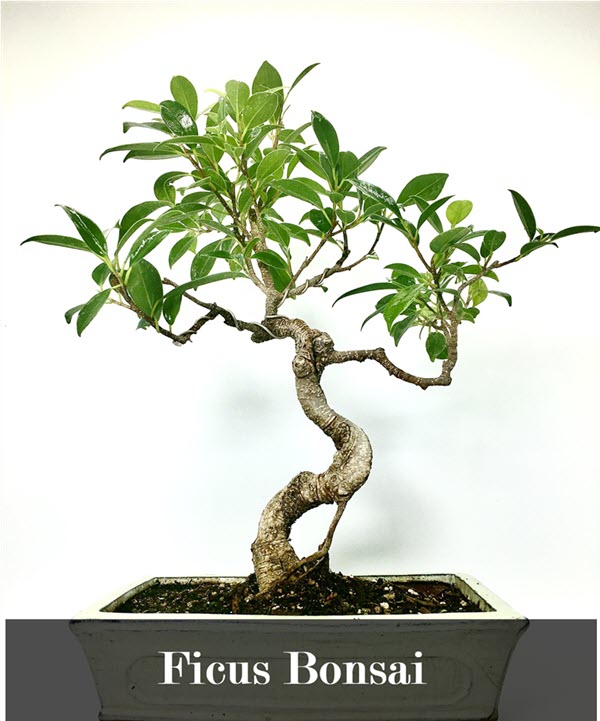
Ficus Bonsai
Ficus Trees, a fig plant, is perhaps the best indoor Bonsai plant there is and an ideal plant for Bonsai beginners. A versatile evergreen plant (bonsai tree type) that thrives best even on low humid conditions and lesser lighting conditions.
Ficus Bonsai have different varieties however the most common and most popular than the rest are Ficus Benjamina and Ficus Retusa. Other are Willow Leaf Ficus, Green Island, Ginseng, Golden gate and Oriental.
As with Ficus Benjamin, these type of Ficus Bonsai is another evergreen plant that also thrives in bright light, make sure to place it in an area that is hit by the morning sun.
In watering Ficus Benjamina, make sure to water only when the surface of the soil feels dry.
While on the other hand, Ficus Retusa a low maintenance bonsai that’s easy to care grows rapidly. You may want to learn and practice with trimming and pruning then if you have this kind of Bonsai at home.

Chinese Elm Bonsai
Another popular indoor bonsai tree is the Chinese Elm Bonsai, though it can also be placed outdoor bonsai. . It is a semi-deciduous plant with small dark green leaves.
Chinese Elm tree tends to grow up to 60 feet in height but since they tolerate pruning and wiring so well, making Chinese Elm the perfect choice to make a Bonsai not to mention its ability to tolerate overwatering.
The Bonsai tree requires bright light and prefers the surface of the soil to be moist most of the time,
The Chinese Elms Bonsai symbolized peace, harmony and above all love.
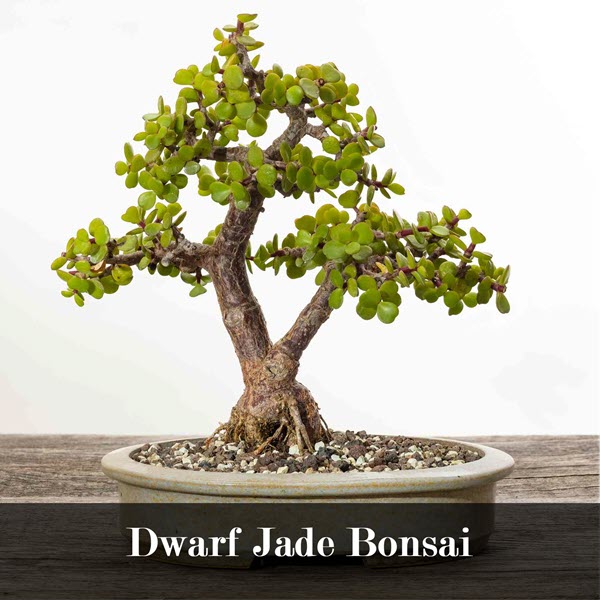
Dwarf Jade Bonsai (Portulacaria Afar)
Although Dwarf Jade looks similar with Jade plant, both also have their differences.
If you are a newbie to Bonsai, Dwarf Jade Bonsai should be your very first Bonsai plant for bonsai tree indoors.
A semi-evergreen plant with little foliage is low maintenance and does not really require too much watering.
Dwarf Jade Bonsai thrives much better in indirect sunlight, therefore when planning to put this indoor bonsai tree in your home make sure to place it in a shaded area.
You can also place Dwarf Jade Bonsai outdoor however important thing to remember is that it cannot tolerate low freezing temperatures. Therefore plan the area where to place the bonsai well.

Japanese Red Maple Bonsai
Japanese Red Maple is not only popular in its full size tree form, but is popular as a bonsai as well.
The main attraction with these type of bonsai are the foliage. Vibrant beautiful leaves that changes its color in different seasons. During summer, vibrant green color can be seen. Then turns into shades of gold, then orange and eventually turns deep red during fall. Beautiful and delicate leaves Japanese red maple bonsai has.
Japanese Red Maple Bonsai requires partial shade light, however it can also be used as an outdoor plant. But make sure to bring it back to its indoor environment.
It is believed that Japanese Red maple symbolizes peace and love as well as beauty and serenity.
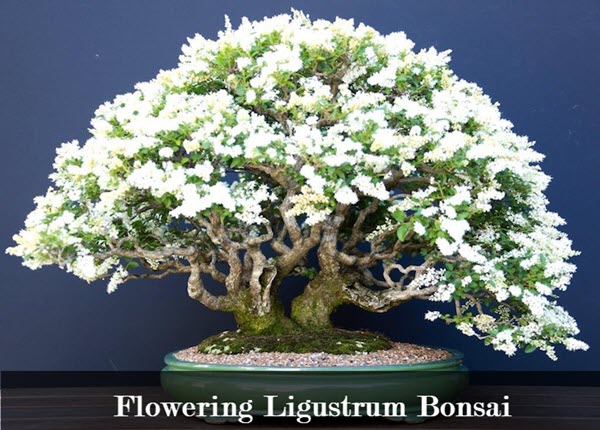
Flowering Ligustrum Bonsai
Another evergreen plant that is most commonly seen as Flowering Ligustrum Bonsai are the Chinese Privet subspecies and the glossy privet.
During Spring to summer, Flowering Ligustrum makes white blossoms, then at fall it then produces berries.
This type of indoor bonsai trees requires bright light to partially shaded area. Make sure to use a well-draining pot and soil and keeping in mind to water on a daily basis.

Ponytail Palm Bonsai (Beaucarnea Recurvata )
One interesting type of indoor bonsai trees is the Ponytail Palm. As the name implies, the bonsai tree actually looks like a ponytail hairstyle.
Another low maintenance and easy to care Bonsai Tree.
It also known as the elephants foot. Why is that so? simply because the base of the bonsai tree resembles that of an elephant’s food.
Since Ponytail is a native of Central America and Mexico (southern), it can thrive in low light conditions and a a dry soil but with well drained soil.
Indoor Bonsai Tree Care Tips
Taking care of your Bonsai trees either placed indoor or outdoor can be rewarding. Most of the varieties of indoors bonsai species thrived when they are placed indoor, however the care, love and attention should also be the same as those Bonsai trees placed outdoor.
- Most Indoor Bonsai species requires direct sunlight and a well drained soil. This means that the area where you should place these Bonsai trees is the area that can be hit with direct sunlight.
- Bonsai Fertilizer is necessary at least given once a month. Half strength but making certain not to give fertilizers during winter season.
- If you want to cultivate the Bonsai tree, you may need to clip off any fresh new growth.
Conclusion
Bonsai are known to be have advantages not only physically but mentally as well. It is believed to help stimulate and enhance joy, love and brings inner peace.
There are so many types of Bonsai trees to choose from, I hope that this guide has helped you learn the different varieties of Bonsai tree out there and able to choose which one you want to place inside your home.
